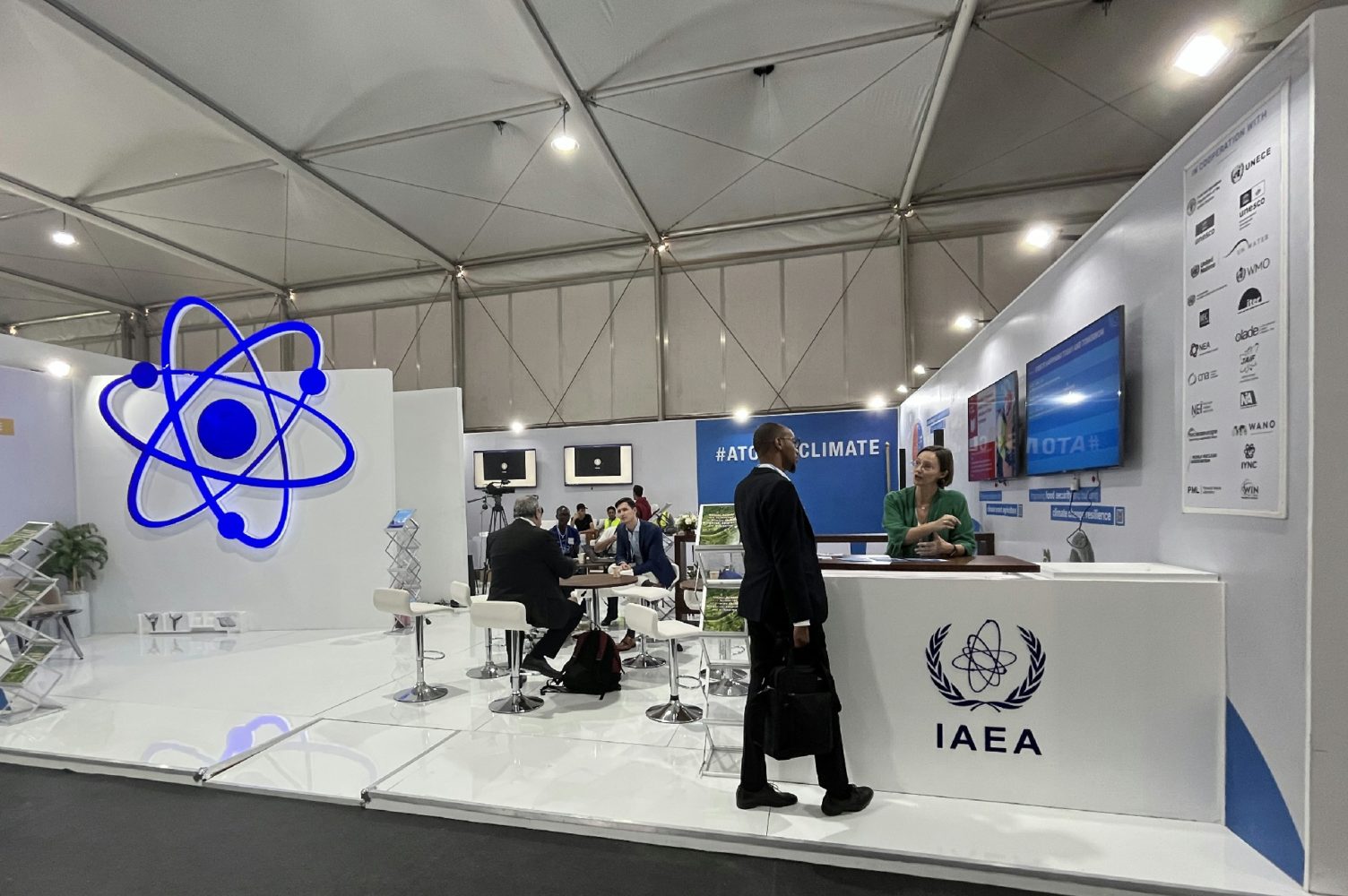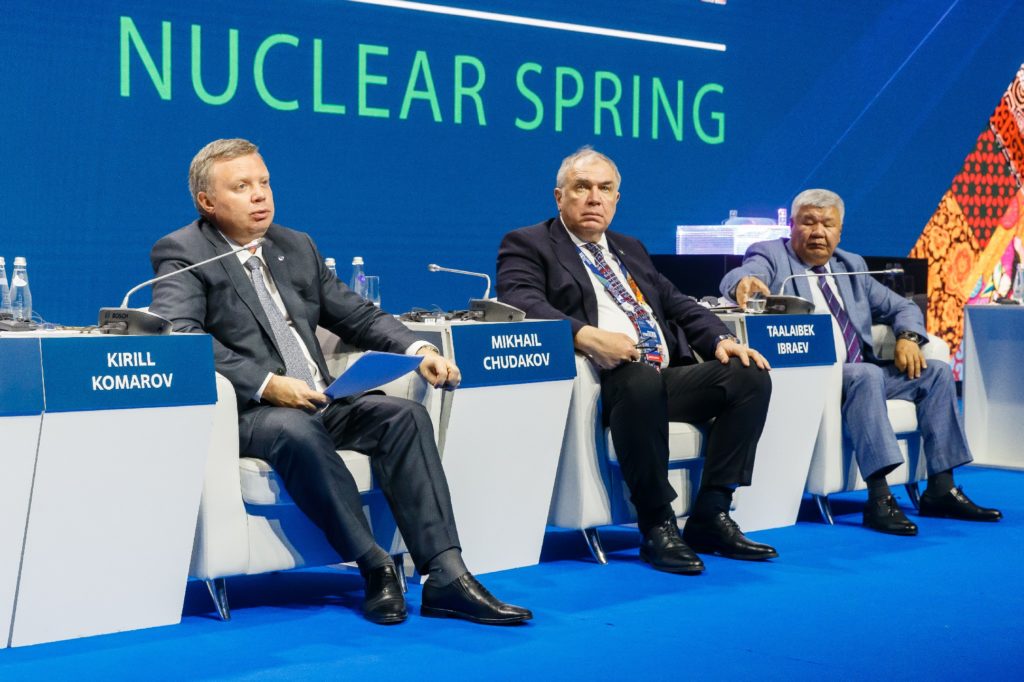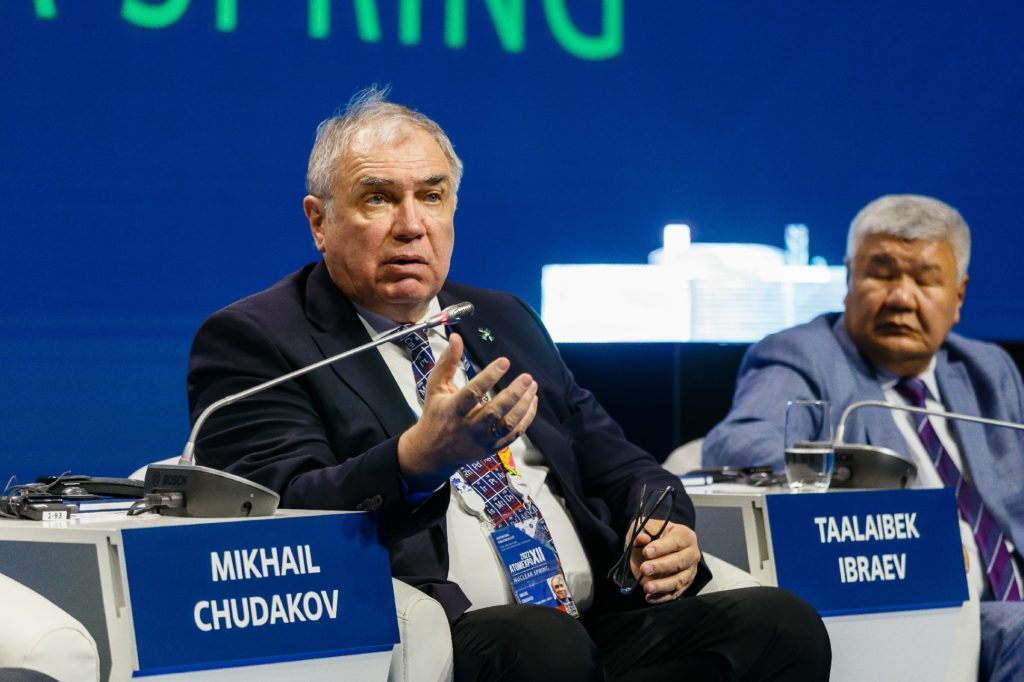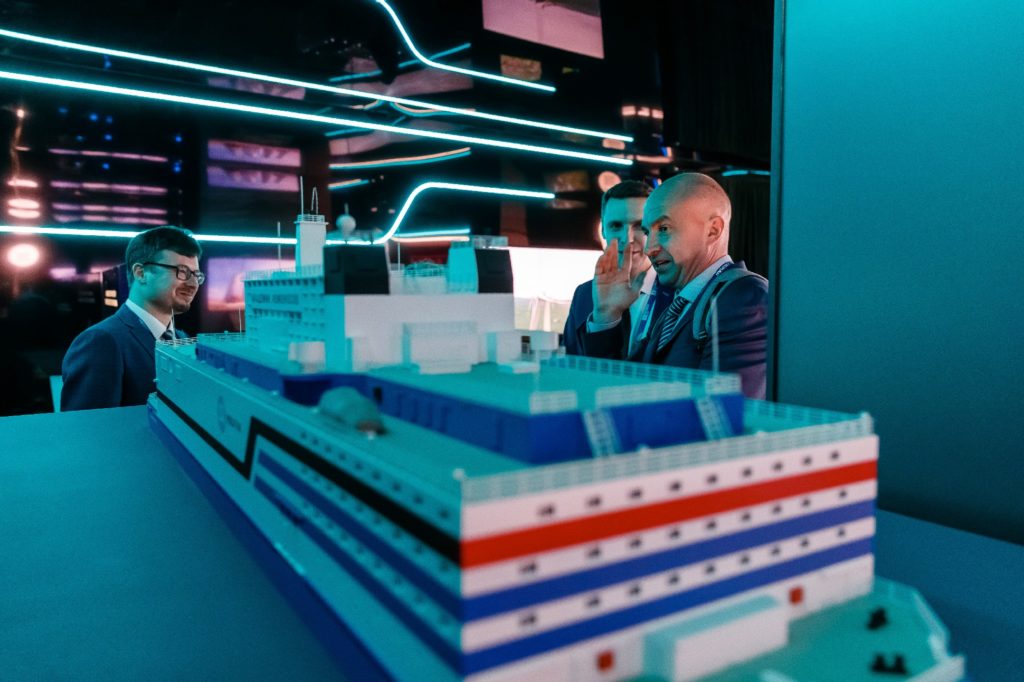
Nuclear Means Stable
back to contentsThe year 2022 has once again demonstrated the significance of nuclear for the global energy mix. And while the focus was initially on the non-carbon nature of nuclear energy, over time it shifted on the property important for every consumer’s wallet — price stability.
Recognizing contribution to net zero
There was much talk last year about how important nuclear energy is for achieving the net zero goal, but relevant evidence of its importance materialized no earlier than this year.
The most relevant of them is likely to be the inclusion of nuclear in the EU taxonomy of sustainable activities. Sustainability criteria for nuclear energy projects were published early this year. That was followed by rigorous research conducted by the UNECE and the Joint Research Center (the two organizations confirmed that nuclear stations are safe and have the least impact on the climate), heated debate, and pro and con letters by high-ranking politicians. Only after that, the criteria were approved by the competent EU authorities. The European Taxonomy now includes such activities as construction of nuclear power plants for which the construction permit has been issued by 2045, modification of existing nuclear installations for the purposes of extension authorized by 2040, and innovative technology (Generation IV reactors). The criteria for recognizing nuclear projects sustainable will apply from January 1, 2023.
It was not Europe, though, that pioneered the recognition of nuclear energy contribution to a carbon-free future — China and Russia had included nuclear in their national taxonomies before. Moreover, Rosatom already obtained several ‘green’ loans for the construction of Akkuyu NPP in 2021. Anyways, other countries often follow Europe’s example and adopt preferential programs, taking cue from the European Union. In November, for example, the Canadian government included small modular reactors (SMRs) into the list of technologies to which investment tax credits may apply.
We can assume that the inclusion of nuclear energy projects into the EU Taxonomy made COP 27 organizers approve a ‘nuclear’ pavilion. “As far as I know, both the World Nuclear Association and the IAEA had repeatedly filed applications for such a pavilion, but the organizers never approved it. This year, the application was finally approved, and I consider this to be our outstanding achievement and a signal that the global climate change conference organizers have changed their attitude towards nuclear and its role in decarbonization of the economy,” Polina Lion, Chief Sustainability Officer at Rosatom, said.
The pavilion does not only symbolize appreciation of nuclear energy by the organizers but rather an opportunity for the visitors to learn more about nuclear technology capabilities and get rid of prejudice. This process has accelerated all over the globe.
Energy crisis
The growing appreciation of nuclear energy has been driven primarily by the energy crisis that affected everyone’s — and preeminently consumers in Europe — bills. The crisis broke out in the second half of 2021 when energy prices and, most notably, the price of gas started to grow. This trend intensified greatly in 2022 on the back of anti-Russian sanctions. The price of natural gas skyrocketed from about USD 200 per 1,000 cu m last January up to USD 3,000 in 2022. As of early December 2022, the price stood at around USD 1,500 per 1,000 cu m. Electricity soon followed energy: in Europe, the average price of electric power soared from about EUR 50/MWh before the crisis up to EUR 1,000/MWh in 2022. According to the Eurostat, non-household electricity prices in the first half of 2022 ranged from EUR 80/MWh in Finland to EUR 300/MWh in Greece. As at December 1, 2022, the price of electricity at the Power Exchange Central Europe platform was EUR 367.61/MWh.
Electric power makes up a significant portion of business costs and household expenses, so it is only natural that the public, businesses and governments raise the issue of price stability increasingly more often. “Nuclear power plants are the only 24/7 source of clean energy, while the cost of electricity they generate does not depend on weather or commodity market fluctuations. In the production of fossil electricity, the price of fuel accounts for 60 % to 80 % of total costs, so any increase in prices immediately translates into the price of electricity. In nuclear generation, the share of fuel is less than 5 % of electricity costs, so no one will even notice an increase in nuclear fuel prices,” Deputy CEO for Corporate Development and International Business at Rosatom Kirill Komarov said when speaking at Atomexpo 2022.
“When we were deciding what power supply option to choose, we were considering coal, LNG and other sources but opted for nuclear. The possibility of building a financial model and showing it to banks is a crucial factor for us as investors,” Georgiy Fotin, CEO of Baimskaya Management Company, echoed Kirill Komarov. Baimskaya operates Baimsky GOK, a large mining and processing site at the gold and copper deposit Peschanka in the Chukotka Peninsula (Northeast Russia). It will be supplied with electric power from an upgraded floating nuclear power plant designed by Rosatom.

Making long-term contracts is a common practice for Rosatom. For example, the Russian nuclear corporation and Egypt’s El Dabaa NPP have signed a fuel supply contract for 60 years, the entire service life of the plant.
Another aspect of stability is a full range of technologies, from plant design to decommissioning and from uranium mining to spent fuel management. Kirill Komarov assured the audience at the press conference that Rosatom could offer all those technologies and make them fully functional.
“Nuclear power plants are the most balanced, most predictable and clean source of power generation. We have four operating power reactors in the country, preventing 100 million tons of CO2 emissions per year. After the new reactors at Paks NPP are brought online, this figure will grow. Besides, it is nuclear that helps us maintain a guaranteed level of electricity prices in the country. The more nuclear you have in your energy mix, the safer you feel in the current energy crisis,” Hungarian Minister of Foreign Affairs and Trade Péter Szijjártó summarized key advantages of nuclear generation when speaking at Atomexpo 2022.
New money
Director General of WNA Sama Bilbao-y-Leon believes that the efforts invested in nuclear energy are insufficient. IAEA Deputy Director General Mikhail Chudakov put this insufficiency into figures: the next 30 years will require USD 3 trillion in investments, or six times more than invested in the previous 30 years (USD 0.5 trillion). The number of reactors going online every year should grow 3 to 4 times (to compare, six reactors were commissioned last year).
Whatever the prospects, the first money starts to flow in. In addition to the investments accounted for in the WNA report (see our Words Without Deeds article in the Newsletter’s October issue), we would like to mention some further investment declarations.
In November 2022, Dutch media reported that EUR 5 billion was allocated to initiate the work on two large power reactors, which are assumed to be built near the operating Borssele Nuclear Power Station. The new reactors are expected to be put in operation no later than 2035.
The Canada Infrastructure Bank (CIB) has finalized an agreement with Ontario Power Generation (OPG) and committed USD 970 million towards Canada’s first small modular reactor (SMR). CIB invests in the first phase of the project that includes design engineering, site preparation, procurement of long-lead equipment, etc.
At COP 27, the Export–Import Bank of the United States (EXIM) issued two letters of interest in financing pre-project engineering services for Units 3 and 4 of the Cernavoda Nuclear Power Plant in Romania. “Based on the preliminary information submitted, EXIM would be able to consider financing up to USD 50,000,000.00 of the US export contract for pre-project engineering services as part of engineering multiplier program (EMP) and up to USD 3 billion of the US export contract for engineering and project management services for Units 3 and 4 Cernavoda NPP Completion Contract,” says a statement by the Romanian nuclear operator Nuclearelectrica. It should be noted that EXIM finances only goods and services originating from its home country. “Up to USD 3 billion” for engineering and project management services means, in fact, the choice of the US technology. But, first of all, there will be two units, and USD 3 billion is not enough to build them. Second, two units of Romania’s only Cernavoda NPP were built to the Canadian design. With that in mind, me might assume it would be more reasonable for Romania to build the new reactors to the same heavy water technology — just because of the experience gained in operating such reactors. What is more, the last US reactor built to this technology was shut down in 1963.

Besides, the US Trade and Development Agency has awarded a grant of USD 14 million to RoPower Nuclear SA, the project company recently established by Nuclearelectrica and Nova Power & Gas. The grant will be used for the front-end engineering and design (FEED) study to advance the development project of Romania’s first SMR nuclear power plant.
As for Rosatom, as per usual, it embodied nuclear energy development in concrete. This year, Rosatom began construction works at Tianwan Unit 8, Xudabao Unit 4, and two units at Egypt’s El Dabaa NPP.
The latest news from nuclear construction sites comes from Brazil where construction of Angra 3 has resumed. The priority task is to finish concreting of the internal containment dome. A tender for the completion of construction works will be announced soon. On December 2, Iran started construction of its Karoon nuclear power plant with a 300 MW pressurized water reactor. This will be Iran’s first SMR (all reactors with a capacity of up to 300 MW inclusive are considered to be small).
Small modular trend
Growing demand for SMRs is another trend that has gained momentum this year. Small modular reactors are attractive for countries with low generation output, island states, and remote regions. Owners of large projects, which can be connected to the grid, also take interest in installing an SMR to ensure the stability of pricing.
Russia is a leader in the SMR technology: Akademik Lomonosov floating nuclear power plant has been in operation for two years; floating power units to supply power to Baimsky GOK are currently under construction; an onshore SMR project is under development in Yakutia. In addition, China launched a high-temperature gas-cooled reactor in 2021. According to Rusatom Overseas CEO Evgeny Pakermanov, Rosatom holds talks on SMR construction with a number of African countries. “A small modular reactor can always find its place in the energy mix of any country,” Kirill Komarov said with confidence at Atomexpo.

To sum it up, this year has demonstrated that nuclear has become almost synonymous with stability. What does it mean? It means, for one thing, new long-term contracts for the supply of nuclear fuel and its components to mitigate volatility risks — this year has already produced a number of examples. We can also assume that the next year will bring in more decision to begin construction and truly allocated (not just declared) investments in nuclear energy. This can be nothing but positive because, as the history of renewable energy technology shows, investments stimulate development and commercialization of technology. As a result, construction costs decrease, and attractive offers appear in the market.




